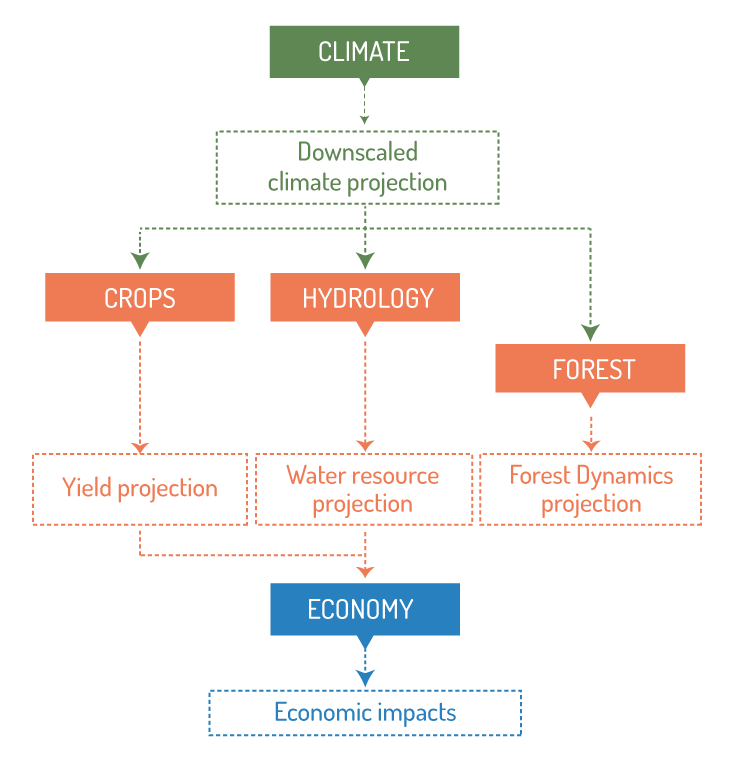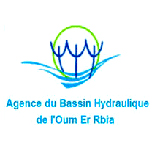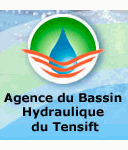Quantitative analyzes of the impact of climate change on the productivity of major crops in Morocco have been undertaken, starting from 2009, by the Ministry of Agriculture and Maritime Fishing (MAPM), with technical support from the FAO, in partnership with the National Institute for Agricultural Research (INRA) and the National Meteorology Direction (DMN).
Thanks to methodologies and tools developed from this first work, the FAO has developed with the contribution of these institutions as well as the European Union, a pilot study of the MOSAICC tool which aims at estimating the impact of the climate change on the agricultural and forest sectors in Morocco.
This evaluation was carried out thanks to an experimental system developed around models related form of five disciplines (climate, agricultural, hydrological, economic, and forster)

MOSAICC is a system of models for impact assessment of climate change on agriculture, water resources and forests. MOSAICC includes five models :
The modeling system includes tools to generate chronological bioclimatic variables series: the minimum and maximum temperatures, the precipitations, the reference evapotranspiration, the start of the growing season and the length of the growing season.
The climate component integrates a statistical downscaling tool based on the SD Portal developed by the Santander Meteorology Group at the University of Cantabria. This tool is designed to perform the statistical downscaling of climate grids generated by the Models of Climatic Change (MCC).
Several methods of maintaining the spatial coherence are available, including regression methods. The tool also includes a time generator for time series of meteorological variables necessary.
Agronomic Model whose role is to simulate the growth and the development of a number of crops. This model distinguishes evaporation from soil and crop transpiration simulates root development, the expansion of the wing and the constraints of the water and provides results as the production of biomass and yield estimates. The effect of the CO2 concentration in the atmosphere is also taken into account. The model considers for now the following crops: cotton, maize, potato, quinoa, rice, soybean, sugar beet, sunflower, tomato and wheat.
Hydrological model which allows estimating the runoff in watersheds of rivers by using the data produced by climate data processing tools. The model model based on a new version of STREAM, meshed rainfall runoff model that simulates the flow rates in major watersheds. This tool was developed within the Free University of Amsterdam. STREAM is therefore a spatial hydrological model type "rainfall-runoff" to simulate the flow rate and flow in large river basins.
Economic model simulating the impact of performance changes due to climate change on national economies. The model developed in partnership with the Free University of Amsterdam, is inspired by the model DCGE IFPRI. The model allows the user to define a number of each producing a commodity to take account of different crops as well as variations differentiated yields of crops across the country. The effect of variations in crop yield is simulated using an offset parameter in the functions of production activity. The model provides estimates for all endogenous variables (eg, prices of commodities, imports, taxes, income, household savings, etc.).
The forestry model that is integrated into MOSAICC is called LANDIS-II is a model allowing the simulation of forest landscape in time. It simulates how ecological processes, including succession and seed dispersal, disturbance, and climate change affects a forest landscape over time. The LANDIS-II version integrated into MOSAICC is based on the physiological processes. This model uses a direct relationship of cause and effect linking forest dynamics to fundamental factors, such as climatic factors (temperature, precipitation and CO2 concentration). It can produce consistent forecasts under new conditions.



















